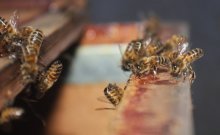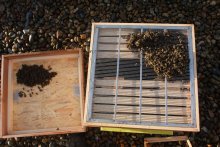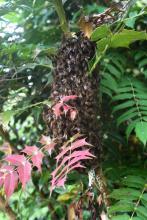Colony 10 has absconded
It would appear that the hive which I put Colony 10 into didn't suit them. I checked this morning and they've left.
This isn't a big surprise. Swarms can be actively looking for sites even after they're put into hives. I did open the hive the day after I put them in and saw them mostly stuck to the hive wall. That suggested that they hadn't accepted the hive. I don't know why they didn't like it.
This morning there were 3 or 4 groggy and cold bees still there but it was otherwise empty. I think they may be scouts which were still out when the swarm left.
- Read more about Colony 10 has absconded
- Log in or register to post comments


